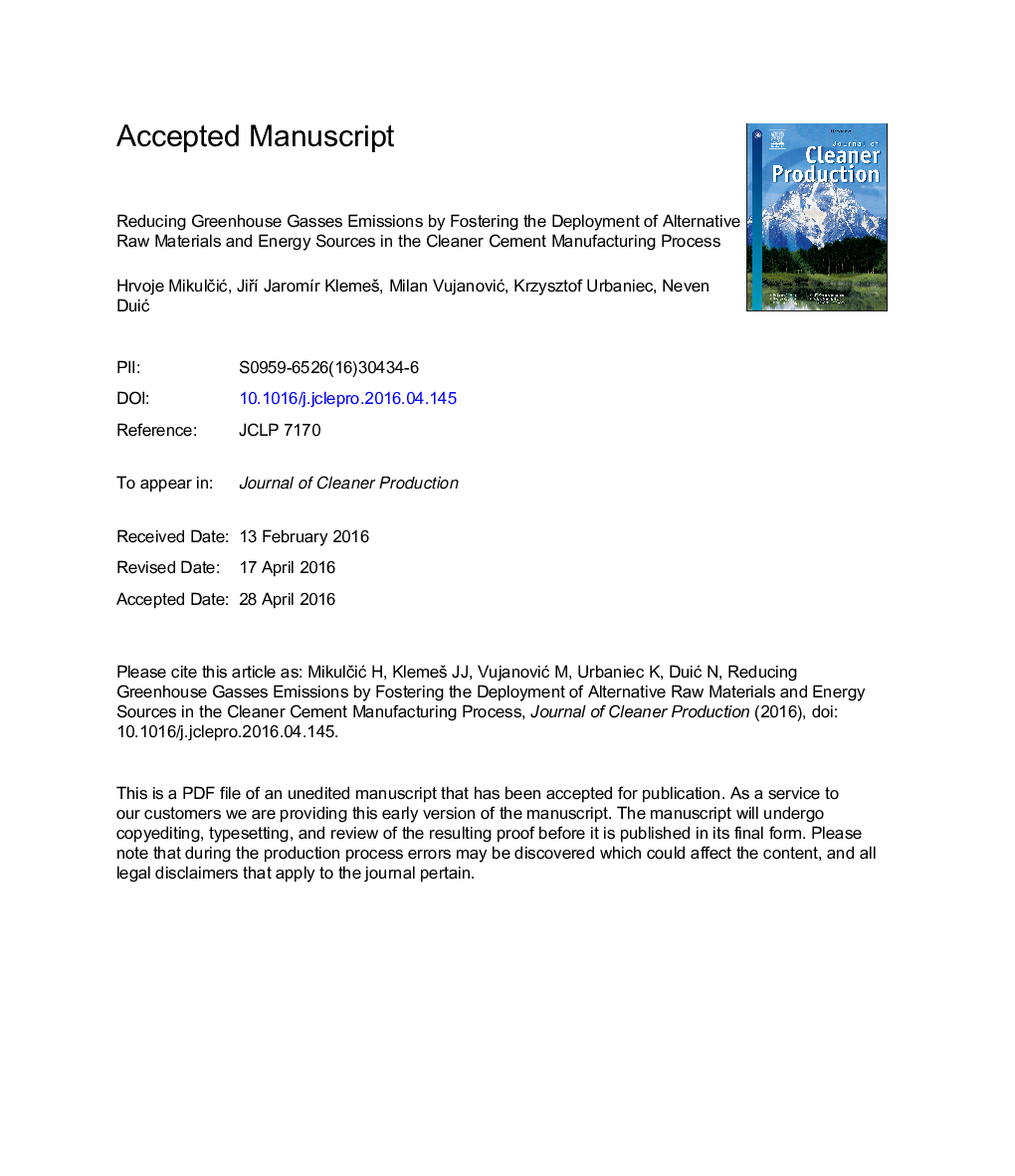| کد مقاله | کد نشریه | سال انتشار | مقاله انگلیسی | نسخه تمام متن |
|---|---|---|---|---|
| 5480615 | 1399319 | 2016 | 38 صفحه PDF | دانلود رایگان |
عنوان انگلیسی مقاله ISI
Reducing greenhouse gasses emissions by fostering the deployment of alternative raw materials and energy sources in the cleaner cement manufacturing process
ترجمه فارسی عنوان
کاهش انتشار گازهای گلخانه ای با تقویت استقرار مواد جایگزین و منابع انرژی در روند تولید سیمان پاک کننده
دانلود مقاله + سفارش ترجمه
دانلود مقاله ISI انگلیسی
رایگان برای ایرانیان
کلمات کلیدی
صنعت سیمان پاک کننده، انتشار گازهای گلخانه ای، بهره وری انرژی، مواد اولیه جایگزین، منبع انرژی جایگزین،
موضوعات مرتبط
مهندسی و علوم پایه
مهندسی انرژی
انرژی های تجدید پذیر، توسعه پایدار و محیط زیست
چکیده انگلیسی
The cement production industry worldwide is one of the largest CO2 emitting industrial sectors. It accounts for a considerable amount of total global greenhouse gas (GHG) emissions. Due to the increasing awareness of global warming, more energy efficient cement production is increasingly being emphasized. One of the priorities is to reduce the energy demand and innovate the production process to move towards the cleaner production as: Energy efficiency improvements; Waste heat recovery; Reduction of clinker/cement ratio and use of alternative raw materials; Substitution of fossil fuels with alternative energy sources. When the GHG emissions at source opportunities are close to being exhausted, the other mitigations options should be considered such as: CO2 capture and storage. This is however in most cases not the final solution from the point of Life cycle assessment (LCA). In recent years various mitigation measures are gaining on the importance and the cement industry is more and more shifting to cleaner production. Among the others, there are two measures, which can reduce the GHG emissions considerably: the use of alternative raw materials and alternative fuels. The challenge for the cement industry is to use alternative raw materials especially those originating from other industries where they are considered as by-products or even waste. Some of these by-products include: Bottom ash from municipal solid waste incinerators; Fly ash from coal power plants; Gypsum from the desulfurization plants used in power plants. Another important measure is the energy efficiency improvement in existing cement plants. There are various approaches for controlling and improving the energy efficiency within existing cement manufacturing units, however, mathematical modelling, simulation, optimisation and Process Integration are increasingly gaining in importance. The mathematical modelling approach uses the numerical simulations for the investigation of the thermo-chemical processes occurring inside of the manufacturing unit. The results gained are being used to enhance the efficiency of cement production. They improve the understanding of the flow characteristics and transport phenomena taking place inside the cement combustion unit. The objective of this paper is to review the current status of the cleaner cement manufacturing, the cement industry's shifting to alternative raw materials and alternative energy sources, and the modelling of the thermo-chemical processes inside the cement combustion units. Additionally, some critical issues, which up to now have not been adequately resolved, are outlined.
ناشر
Database: Elsevier - ScienceDirect (ساینس دایرکت)
Journal: Journal of Cleaner Production - Volume 136, Part B, 10 November 2016, Pages 119-132
Journal: Journal of Cleaner Production - Volume 136, Part B, 10 November 2016, Pages 119-132
نویسندگان
Hrvoje MikulÄiÄ, JiÅà JaromÃr KlemeÅ¡, Milan VujanoviÄ, Krzysztof Urbaniec, Neven DuiÄ,
